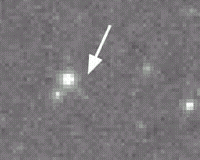| . |  |
. |
Pasadena - Aug 21, 2003 When you pick up that TV remote to switch to your favorite channel, you're riding a wave-an infrared wave. Our eyes can't see the infrared light but our television sets can as we happily surf through reality shows, sitcoms and sports. Infrared has forged a distinct niche in our lifestyle. It's as much a tool as X-rays in the dentist chair or radio waves in our cars. Like the other two waves, infrared is a part of the electromagnetic spectrum. Sir Frederick William Herschel discovered it in 1800 when he directed sunlight through a prism and measured the temperatures from the rainbow of colors. When he dipped his thermometer into an area beyond the red, where there appeared to be no visible sign of light, he discovered this region had the highest temperature of all. Herschel's discovery was named "infrared" meaning "below the red." Infrared is an "invisible" light that we normally think of as heat. It's a kind of light that our eyes can't see, but we can still detect it even if it's dark, dusty or smoky. Today infrared has many exciting and useful applications, although most people are unaware of the role it plays in our lives. Doctors use infrared as a medical diagnostic tool, to detect breast tumors and monitor blood flow in our bodies. Firefighters use infrared detection to find people trapped in smoke-filled buildings or pinpoint the location of forest fires through dense clouds of smoke. Infrared is used in search and rescue operations to find lost people in the ocean and wilderness at night. Everything in the universe emits some kind of light, just not always the kind of light that we can see. "There are processes and objects in the universe that we never see just with our human senses," says astronomer Dr. Michelle Thaller of JPL/Caltech, "so we have to use our technology to extend our senses to be able to see things that have been invisible to us." The Space Infrared Telescope Facility, scheduled to launch this month from Cape Canaveral Air Force Station in Florida, will give scientists a new "set of eyeglasses" to see space. "We'll be looking for, among other things, warm discs of dust around stars that may indicate planets are forming," says Thaller, "and we'll see that in warm infrared light." The Space Infrared Telescope Facility will be able to see deep into thick, dark and dusty regions of space, and its state-of-the-art detectors will make this observatory a million times more sensitive than previous infrared missions. And finally, a factoid that only a couch potato could appreciate--this 19-hundred pound observatory is so sensitive it will be able to detect the pulse of a TV remote control five thousand miles away! Related Links Space Infrared Telescope Facility SpaceDaily Search SpaceDaily Subscribe To SpaceDaily Express
 Los Alamos - Aug 15, 2003
Los Alamos - Aug 15, 2003The most powerful explosions in the universe, gamma-ray bursts, may generate the most energetic particles in the universe, known as ultrahigh-energy cosmic rays (UHECRs), according to a new analysis of observations from NASA's Compton Gamma-Ray Observatory. |
|
| The content herein, unless otherwise known to be public domain, are Copyright 1995-2006 - SpaceDaily.AFP and UPI Wire Stories are copyright Agence France-Presse and United Press International. ESA PortalReports are copyright European Space Agency. All NASA sourced material is public domain. Additionalcopyrights may apply in whole or part to other bona fide parties. Advertising does not imply endorsement,agreement or approval of any opinions, statements or information provided by SpaceDaily on any Web page published or hosted by SpaceDaily. Privacy Statement |